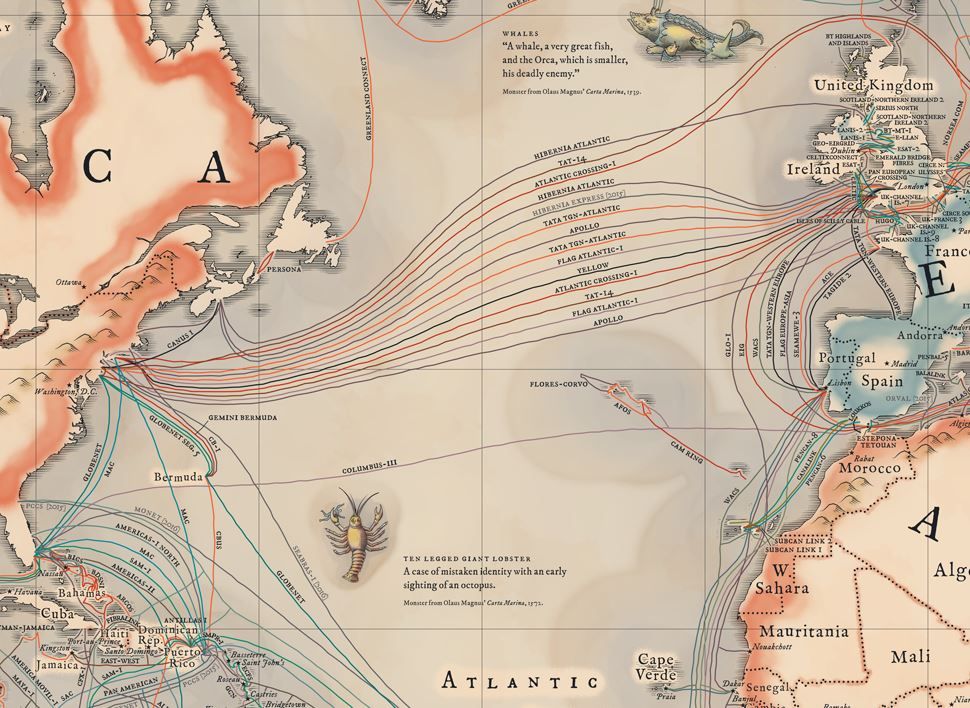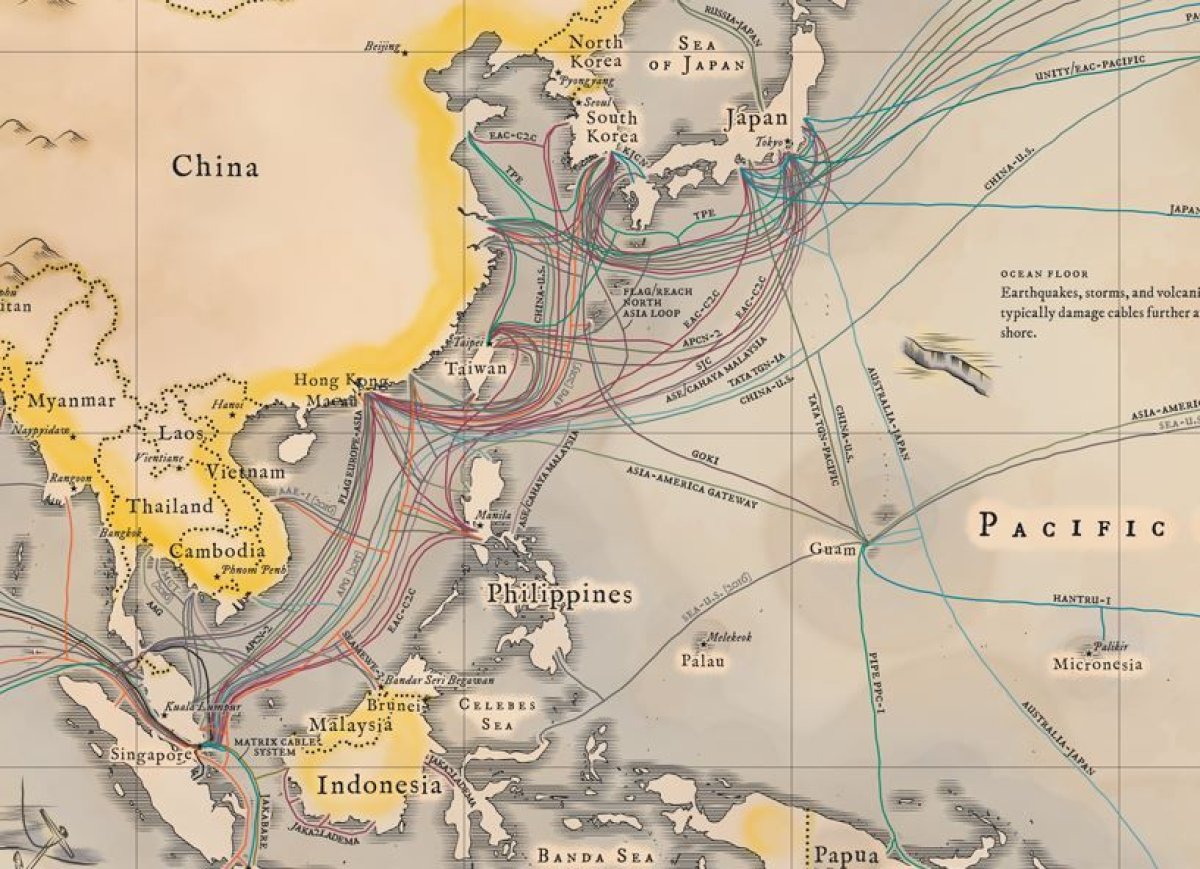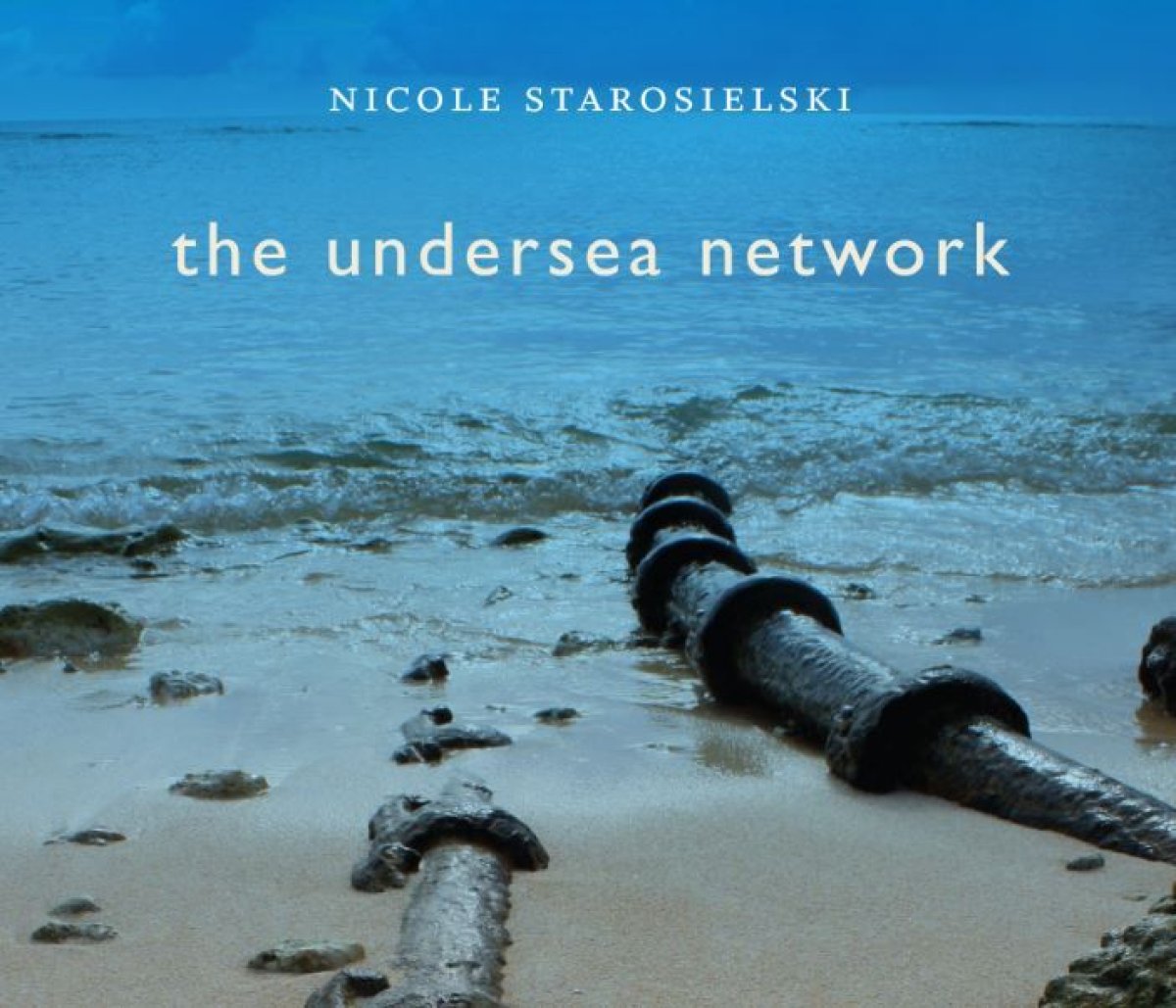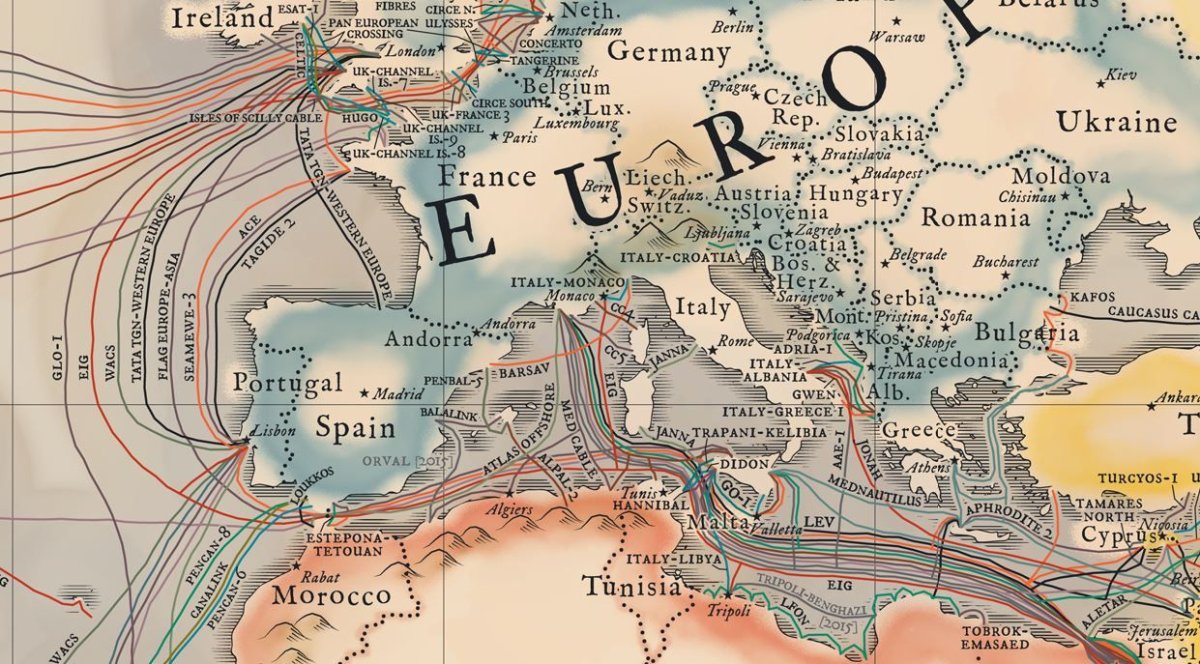
Things at the bottom of the sea: pale fish, manganese nodules, plastic trash and cables. Lots of cables.
In our wireless, satellite-broadcasted world, it's easy to forget that most of our electronic communications still run through wires. This includes the vast majority of international calls, text messages and Internet transmissions, which must be ferried through cables that stretch across continents at the bottom of the ocean.
These undersea cables are easy to forget, since they are well out of sight and mind. But without them, the world as we know it would cease to exist, and their history is fascinating, says Nicole Starosielski, an assistant professor of media, culture and communication at New York University. Starosielski first looked into the topic while in grad school at U.C. Santa Barbara, at her adviser's behest; she thought it would be boring, but she instead found herself enthralled, and ended up writing one of the first books on the topic called The Undersea Network.
What is something most people don't know about undersea cables?
Most people probably don't know that 99 percent of all transoceanic data traffic goes through undersea cables, and that includes Internet usage, phone calls and text messages. This route is also faster than satellite transmissions, by up to eight-fold.

Can these communications on these cables be tapped into or intercepted?
They have been in the past. In something called Operation Ivy Bells, the U.S. tapped Russian undersea cables during the Cold War. There's also concern this could be or is happening now, according to [NSA whistle-blower] Edward Snowden's revelations.
When were these things installed?
The first transatlantic cable was laid in 1860s, and these kind of telegraph cables lasted for 60 to 70 years or even longer underwater; they were extremely durable. In the 1950s they were basically replaced by telephone cables. And then starting in the 1980s these were swapped with fiber optic cables, which carry information at the speed of light.

What has been the most catastrophic failure in the history of undersea cables?
In 2006 there was a magnitude 7.0 earthquake off Taiwan that severed eight cables in multiple places, disrupting much of the Internet traffic to and from China. It took 11 cable ships a total of 49 days to complete the repairs.
There were also a series of breakages off the coast of Egypt in 2008, affecting 60 million users in India, 12 million users in Pakistan, 6 million in Egypt, and 4.7 million in Saudi Arabia. There's a theory that these cuts were made intentionally as an act of sabotage or terrorism.
How are breakages avoided?
There are now pretty detailed maps of the areas where the cables are laid, so cablemen can avoid hazards like undersea mountains. The biggest problem has always been people dropping anchors or trawl nets, and this still happens all the time—there is a cable break about every three days. Near shore cables are buried below the seafloor to avoid this.
Submarine landslides are also a problem, as in the case of Taiwan.

How are the cables repaired?
It's actually not that difficult. The cable company contracts a ship to go to the exact spot where the break is. You lower down a grapnel, which is like a big shovel, and pull up each side of the cable and buoy them. Then you splice in a new wire segment that connects each side. The problem is, there aren't many of these ships. When a lot of breaks [happen] all at once, there may not be enough [ships] to go around.
What are some other interesting facts you came across in your research?
In the telegraph era, British companies would lay undersea cables in China in the middle of the night because the government didn't approve of them, and this allowed them to send communications in and out of the country.
Throughout history, cables have occasionally been damaging to the environment, but that isn't necessarily the case anymore. In fact, some work shows the "cable protection zones," where shipping is disallowed to avoid cable breakages from trawling or anchor-drops, can actually increase fish populations.
Uncommon Knowledge
Newsweek is committed to challenging conventional wisdom and finding connections in the search for common ground.
Newsweek is committed to challenging conventional wisdom and finding connections in the search for common ground.
About the writer
Douglas Main is a journalist who lives in New York City and whose writing has appeared in the New York ... Read more
To read how Newsweek uses AI as a newsroom tool, Click here.








